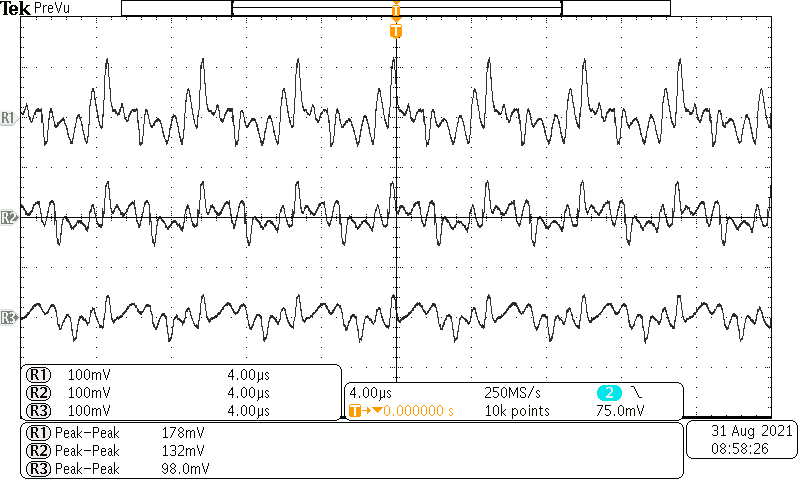TIDT252 December 2021
3.3 Output Voltage Ripple
Figure 3-4 shows the output voltage ripple at 9.0 V, 12.0 V, and 16.0 V for a load current of 60.0 A.

R1: 9.0 VIN, 60.0-A
load, 178.0-mV peak-peak-ripple [scale: 100 mV/div, 4.0 μs/div]
R2: 12.0 VIN, 60.0-A
load, 132.0-mV peak-peak-ripple [scale: 100 mV/div, 4.0 μs/div]
R3: 16.0 VIN, 60.0-A
load, 98.0-mV peak-peak-ripple [scale: 100 mV/div, 4.0 μs/div]
Figure 3-4 Output Voltage Ripple